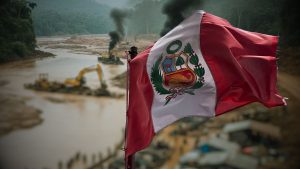This article was initially published in the Revista Seguridad y Poder Terrestre
Vol. 2 No. 4 (2023): October to December
DOI: https://doi.org/10.56221/spt.v2i4.44
Summary
Nowadays, organizations face a globalized world in constant evolution. It is important to understand that they are immersed in a continuous cycle of transformation, therefore, it is imperative to adapt to this dynamic. Organizational culture plays a crucial role in the quest for institutional transformation. The purpose of this article is to analyze the importance of organizational culture within a conceptual framework, as well as to show its levels and types, based on studies. This is carried out in order to examine the relevance in relation to strategic objective No. 8 of the Institutional Transformation Plan 2020-2034: “Changing the institutional culture”. To carry out this analysis, the hermeneutic-interpretative method was used with a qualitative approach. In addition, the Atlas.ti software was used to facilitate the interpretation of the data. In conclusion, it is highlighted that organizational culture is a fundamental component that allows the achievement of the objectives in an organization. In the case of the Army of Peru (EP), being a hierarchical institution, it has a significant advantage compared to other organizations. This preeminence lies in its leaders, who, through their example, become referents in the different levels of leadership of the EP, especially in strategic leadership. They are important managers of change and transformation of the institution, which contributes to achieving the proposed objective of “Changing the institutional culture”.
Key words: Organizational Culture, Organizational Climate, Leadership, Transformation.
Introduction
Globalization has led companies to constantly face profound transformations. In this context, the cultural factor plays a relevant role, so that organizational culture has important implications on the willingness to change on the part of the members of an organization.[1] In relation to this,[2] institutions undergo changes to respond to the internal demands that motivate their evolution, as well as to face the external demands derived from their own growth and competition with other organizations.
Likewise, constant improvement in organizations requires not only the transformation of the processes that are carried out, but also the way in which management, administrative and workers act. In this sense, “an organization is never a ready-made and finished unit, but a living and changing social organism”.[3] In the same way, it is stated that organizational culture is an essential element that allows the achievement of the proposed objectives, since it refers to the way people act, which makes it possible for an organization to differentiate itself from others.[4]
Consequently, the objective of this article is to analyze the importance of organizational culture under a conceptual framework in relation to its meaning. In addition, it seeks to show the different levels and types of organizational culture based on studies conducted. The purpose is to examine whether strategic objective No. 8: “Change organizational culture” of the Army Transformation Plan (ITP) 2020-2034[5] is adequate and can generate changes in our organizational culture.
Organizational Culture
Currently, it is considered essential to examine institutions from the perspective of organizational culture, since it is recognized as a crucial component for achieving an organization’s objectives. According to Martínez et al.[6] it is considered an intangible asset that has been acquired over time and is transmitted to new members who join the entity.
There are different approaches to the concept of organizational culture. Pettigrew[7] defines culture as “a system of publicly and collectively accepted meanings operating for a given group at a given time”. On the other hand, Schein[8] points out that organizational culture is based on shared beliefs that have been learned by a human group to solve problems of external adaptation and integration, whose solutions have proven to be effective, so they are considered valid and are taught to new members as the right way to address difficulties. Additionally, Mendez-Álvares[9] describes it as an implicit and intangible system of meanings that define behaviors and shape thinking and lifestyle in an organization. These are determined by ideologies, norms, values, rituals, myths, beliefs, stories, habits, symbols, traditions, language, among others, and evolve over time, being essential elements in the organization. For their part, Vesga et al.[10] affirm that the concept of organizational culture arises from the disciplines of anthropology and sociology, which have served as a basis for understanding and describing the differences in an organization in relation to the fundamental values that characterize it. Finally, the Globe organization[11] conducted a study in 62 countries, defining it as “the set of motives, values, beliefs, identities and interpretations of key events for the life of an organization/society, which in turn are the result of common experiences, shared by the members of a community and transmitted through generations”.[12]
On the other hand, it is important to note that management plays a crucial role in an organization, as it involves the implementation of procedures and actions to achieve a specific objective. According to Cameron and Quinn,[13] in the field of organizational management, organizational culture is part of the socio-psychological space in which all the activities that allow this process to be efficient are carried out. Thus, organizational culture has been shown to have a positive impact on people and is considered an important variable in predicting the performance of an organization.
This interest in management and organizational culture is reflected in academic research, especially in the business field. For example, the success of companies in Japan, which enabled them to become a world power, demonstrated the importance of culture in the performance of an organization.[14] Therefore, many researchers have been interested in studying management in the context of organizational culture. In this sense, “any change process must involve the study of organizational culture”.[15]
Levels of Organizational Culture
Schein identified and distinguished three levels of organizational culture.[16] The first was called “Artifacts and creations”; the second, “Values”; and the third, “Basic underlying assumptions” (Figure 1).
Figure 1: Levels of Culture and their Interaction

Source: Schein[17]
Likewise, Felcman & Blutman[18] added two levels to the original scheme proposed by Schein. [19] Between the second and third levels, there is an intermediate level called “cultural types”, which are also known as organizational models. These refer to the particular ways in which each organization leads, manages and rewards its members. There is even a fundamental base level called “paradigm”, which the authors consider as “worldviews” based on the theorists Kuhn and Morgan.[20] (Figure 2).
Figure 2: Organizational Culture Pyramid

Source: Felcman & Blutman[21] based on Schein.[22]
Performance Value Framework and Types of Organizational Culture
In the research on organizational culture, the Performance Values Framework (PVF) was considered as an important element. It allows an organization to use a set of criteria to measure its performance and progress in achieving its objectives. Quinn & Rohrbaugh[23] consider that the FPC is one of the most influential models, since it allows a diagnosis of the organizational culture. It is significant to mention that it was initially used to investigate effectiveness indicators in an organization, which generated controversy. For this reason, an investigation was carried out in which three dimensions of value were identified: internal-external, flexibility-control and means-ends (the latter being integrated in the first two).
Based on the FLC model, they distinguished four types of organizational culture: clan, adhocratic, market and hierarchical.[24] In addition, they developed an instrument to assess it, where each type has distinctive characteristics that facilitate its identification. However, these are not independent of each other and one culture is expected to predominate over the others. For example, in the clan culture, teamwork prevails and leaders act as mentors. Tradition and loyalty are emphasized. In the adhocratic culture, the organization is conceived as dynamic, highly flexible and innovative. Creativity and adaptability are encouraged. In contrast, the market culture is results-oriented. It is characterized as highly competitive, and leaders tend to be demanding. Finally, hierarchical culture is based on clear rules and policies. Its structure is rigid, and hierarchical order and strict compliance with rules are emphasized. Under this context, a military organization such as the EP is clearly identified as a hierarchical culture. It is characterized by a well-defined hierarchical structure and strict compliance with rules. Discipline is a fundamental pillar in this type of organization (Figure 3).
Figure 3: Identification of Competing Organizational Values and Organizational Culture Types

Source: Cameron & Quinn[25]
Cameron & Quinn’s analysis[26] states that culture presents implicit and often indiscernible aspects of an organization, including values and consensual interpretations based on the way things are.[27]
Globe and Organizational Culture
Felcman & Blutman note that the Globe organization “identified nine basic assumptions (present at the organizational and societal levels) called uncertainty tolerance, power distance, institutional collectivism, intra-group collectivism, gender equality, assertiveness, future orientation, performance orientation, and human orientation”.[28] This study considered them as independent variables that can influence effective leadership, as well as other dependent variables.[29]
Transformation Based on Organizational Culture
To understand a transformation process in an organization, it is important to keep in mind that the term “transformation” refers to the action and effect of transforming, according to the Royal Spanish Academy.[30] This implies a profound change in what is intended to be transformed. Vera argues that “transformation is to change the shape of someone or something, turning it into something else, and relates it to the term military transformation, which is commonly understood as a profound change in a military institution”.[31] Likewise, organizational change refers to the transformation of the processes and activities carried out by the members of an organization. It has a socio-cultural impact that fosters efficient work performance, increasing both individual and group satisfaction, which ultimately leads to greater profitability for the organization.[32]
The difficulties and failures in the processes of change that have been observed in some Latin American nations have been attributed to the following popular expression: “It is a cultural problem”. This leads to comparing these situations with countries whose cultures favor change, such as the Nordic nations and Asian countries like Japan and South Korea.[33] In addition, change management is fundamental to achieving greater efficiency, whether in large or small companies. This is considered an indispensable condition today.[34] In both public and private administration, the organizational climate is a topic of great interest to governments. If the work environment is unpleasant, this can generate disadvantages for the company or entity, which, in turn, translates into a decrease in productivity.[35]
In the context of PE, one advantage can be highlighted in comparison with other large organizations. This is that its members tend to emulate the most successful leaders. Therefore, it is essential that the most respected leaders become believers and sponsor cultural change. This means that the rest of the staff will observe and follow their lead. It is important to leverage this unique role of leaders to achieve PD transformation. However, it is important to keep in mind that this transformation process is gradual and often slow.[36]
The EP Military Leadership handbook states that military leaders base their actions on their instinct and what they have observed in the past. Therefore, what leaders see others do is the foundation for what they are likely to do in the future. That is why every military leader, whether consciously or unconsciously, leads by example. According to the manual, a PD leader is a military leader who, by virtue of his or her hierarchy, an assumed role, or an assigned responsibility, inspires and influences subordinates to accomplish the assigned mission. EP leaders motivate people both inside and outside the chain of command to achieve the best for the benefit of the organization.[37]
EP has three levels of military leadership. The first is strategic leadership, which has institutional accountability and is responsible for change management and transformation of the institution. The second is organizational leadership, constituted by those who work in the General Staffs and in the Supporting Organs, whose influence is given through the Chain of Command. The third is direct leadership, whose responsibility falls on a Large Unit, Unit, Company, Section or Group. At this level, leadership is exercised through immediate contact, since the subordinates are constantly with their leaders[38] (Figure 4).
Discussion of Results
Figure 4: Semantic Data Triangulation Semantic Network

Source: Own elaboration
This article has a qualitative approach. Data triangulation was carried out using the Atlas.ti program in order to seek the interpretative certainty of the documentary research and the semi-structured interview, which were not subject to a rigid format. The results show the importance of organizational culture as an essential factor for the institution, in relation to a process of “change” in which it seeks to reaffirm the values that every member of the EP must keep in mind in their actions, such as loyalty, integrity, discipline, esprit de corps and responsibility.
The objective proposed in the Institutional Transformation Plan 2020-2034, “Changing the institutional culture”, is appropriate and can generate changes in the organizational culture of the EP. For this reason, it is important for the EP in its transformation process, however, it requires the awareness and involvement of all staff. To achieve this, positive paradigms must be created to achieve this objective, especially acting by example, since subordinates will look to each officer, technician and non-commissioned officer for role models to follow. Otherwise, they may use them as an excuse for their own shortcomings or mistakes. This is why the importance of individual conduct and appearance is a source of inspiration and respect, as well as pride and desire to belong to the Glorious EP.
Likewise, this process must be guided by the leaders of the Strategic, Organizational and Direct levels, especially the Strategic Leadership, since they have the institutional responsibility, as they are the managers of change and transformation. It is imperative that their decisions are always oriented in favor of institutional interests, but not in decisions of personal interest where the ego influences. The example set by the strategic leaders will allow achieving the strategic objective proposed in the ITP, which may take a certain amount of time to show its results. The above is reinforced by Wong,[39] who argues that the Army -in relation to other large organizations- has a great advantage, due to the fact that the Army has the following advantages has a great advantage because its members tend to emulate the most successful leaders.
It is worth mentioning that at the time of writing this article, the Planning Directorate of the Peruvian Army (DIPLANE)[40] was carrying out the Institutional Transformation Plan version 2, where they consider as Strategic Objective No. 9 “Improve the Organizational Culture in the Army”. This new version was in the approval phase by the Strategic Leadership level.
Conclusions
Nowadays, the study of organizational culture has become fundamental to understanding organizations and achieving their objectives. In this sense, EP, as a hierarchical organization, has a significant advantage compared to other organizations. Its leaders, through example, become referents at different levels of leadership, which contributes to achieving the strategic objective established by the institution. The strategic objective proposed by the PE is appropriate, since organizational culture is a strategic resource that guarantees efficiency, productivity and quality in the organization. Leaders, especially those at the strategic level, must lead by example, through their actions and decision making. They have the institutional responsibility to lead change and transformation in the organization.
Endnotes:
- Vesga, R. J., García, R. M., Forero, A. C., Aguilar, B. M., Ángel, J. J., Quiroz, G. E., . . . Gómez, V. M. (2020). Aspectos de la cultura organizacional y su relación con la disposición al cambio organizacional [Aspects of organizational culture and its relation to the organizational change disposition]. Suma Psicológica, 27(1), 52-61. doi:https://doi.org/10.14349/sumapsi.2020.v27.n1.7 ↑
- Vesga, R. J., García, R. M., Forero, A. C., Aguilar, B. M., Ángel, J. J., Quiroz, G. E., . . . Gómez, V. M. (2020). Aspectos de la cultura organizacional y su relación con la disposición al cambio organizacional [Aspects of organizational culture and its relation to the organizational change disposition]. Suma Psicológica, 27(1), 52-61. doi:https://doi.org/10.14349/sumapsi.2020.v27.n1.7 ↑
- Chiavenato. (2000). Administración de Recursos Humanos (Vol. Quinta Edición). México: Editorial Mc Graw Hill, 15. ↑
- Chávez-Hernández, N. (2020). Análisis cuantitativo del Modelo de Valores en Competencia en pequeñas instituciones educativas de nivel superior en el municipio mexiquense de Coacalco de Berriozábal. Ciencias Administrativas. Teoría y Praxis, 15(2), 97-112. https://cienciasadmvastyp.uat.edu.mx/index.php/ACACIA/article/view/236 ↑
- Diplane. (2020). Plan de Transformación Institucional 2020-2034. Ejército del Perú. Lima: Dirección de Planeamiento del Ejército – DIPLANE. ↑
- Martínez, C., Arellano, A., & Lagarda-Leyva, E. (2022). Cultura organizacional verde: análisis desde las dimensiones de sostenibilidad corporativa. Información tecnológica, 33(2), 99-106. doi:https://doi.org/10.24215/23143738e095 ↑
- Pettigrew, A. (1979). On studying organizational cultures [Sobre el estudio de las culturas organizacionales]. Administrative science quarterly, 24(4), 570-581. Obtenido de https://www.jstor.org/stable/2392363 ↑
- Schein, E. H. (2010). Organizational Culture and Leadership [Cultura Organizacional y Liderazgo] (Vol. 4th. edition). San Francisco: Jossey Bass. ↑
- Mendez-Álvarez, C. E. (2019). Elementos para la relación entre cultura organizacional y estrategia [Components for the Relationship between Organizational Culture and Strategy]. Universidad & Empresa, 21(37), 136-169. doi:https://doi.org/10.12804/revistas.urosario.edu.co/empresa/a.7681 ↑
- Vesga, R. J., García, R. M., Forero, A. C., Aguilar, B. M., Ángel, J. J., Quiroz, G. E., . . . Gómez, V. M. (2020). Aspectos de la cultura organizacional y su relación con la disposición al cambio organizacional [Aspects of organizational culture and its relation to the organizational change disposition]. Suma Psicológica, 27(1), 52-61. doi:https://doi.org/10.14349/sumapsi.2020.v27.n1.7 ↑
- Global Leadership and Organizational Behaviour Effectiveness, es una red internacional integrada por investigadores y académicos enfocados en estudiar la cultura organizacional y el liderazgo en distintos países. ↑
- Global Leadership and Organizational Behavior Effectiveness Research Program (Globe). (2004). Culture, Leadership, and Organizations: The Globe Study of 62 Societies. (R. House, P. Hanges, M. Javidan, P. Dorfman, & V. Gupta, Edits.) California : Sage Publications, 15. ↑
- Cameron, K., & Quinn, R. (2006). Diagnosing and changing organizational culture [Diagnosticar y cambiar la cultura organizacional]. San Francisco: Jossey-Bass. ↑
- Denison, D. (1996). What is the difference between organizational culture and organizational climate? A native’s point of view on a decade of paradigm wars [¿Cuál es la diferencia entre cultura organizacional y clima organizacional? El punto de vista de un nativo sobre una d. Academy of management review, 21(3), 619-654. doi:https://doi.org/10.5465/AMR.1996.9702100310 ↑
- Vesga, R. J., García, R. M., Forero, A. C., Aguilar, B. M., Ángel, J. J., Quiroz, G. E., . . . Gómez, V. M. (2020). Aspectos de la cultura organizacional y su relación con la disposición al cambio organizacional [Aspects of organizational culture and its relation to the organizational change disposition]. Suma Psicológica, 27(1), 54. doi:https://doi.org/10.14349/sumapsi.2020.v27.n1.7 ↑
- Schein, E. H. (2010). Organizational Culture and Leadership [Cultura Organizacional y Liderazgo] (Vol. 4th. edition). San Francisco: Jossey Bass. ↑
- Ibid., 30. ↑
- Felcman, I., & Blutman, G. (2020). Cultura organizacional: nuevos dioses y la búsqueda del eslabón perdido para la transformación del Estado. Cuadernos Del INAP (CUINAP), 1(18). https://publicaciones.inap.gob.ar/index.php/CUINAP/article/view/198 ↑
- Schein, E. H. (2010). Organizational Culture and Leadership [Cultura Organizacional y Liderazgo] (Vol. 4th. edition). San Francisco: Jossey Bass. ↑
- Kuhn, T. (1980). La estructura de las revoluciones científicas. México: Fondo de Cultura Económica. ↑
- Felcman, I., & Blutman, G. (2020). Cultura organizacional: nuevos dioses y la búsqueda del eslabón perdido para la transformación del Estado. Cuadernos Del INAP (CUINAP), 28. https://publicaciones.inap.gob.ar/index.php/CUINAP/article/view/198 ↑
- Schein, E. H. (2010). Organizational Culture and Leadership [Cultura Organizacional y Liderazgo] (Vol. 4th. edition). San Francisco: Jossey Bass. ↑
- Quinn, R., & Rohrbaugh, J. (1983). spatial model of effectiveness criteria: Toward a competing values approach to organizational analysis [Un modelo espacial de criterios de efectividad: Hacia un enfoque de valores competitivos para el análisis organizacional]. Management science, 29, 363-377. doi:https://doi.org/10.1287/mnsc.29.3.363 ↑
- Ibid. ↑
- Cameron, K., & Quinn, R. (2006). Diagnosing and changing organizational culture [Diagnosticar y cambiar la cultura organizacional]. San Francisco: Jossey-Bass., 35. ↑
- Cameron, K., & Quinn, R. (2006). Diagnosing and changing organizational culture [Diagnosticar y cambiar la cultura organizacional]. San Francisco: Jossey-Bass. ↑
- Vesga, R. J., García, R. M., Forero, A. C., Aguilar, B. M., Ángel, J. J., Quiroz, G. E., . . . Gómez, V. M. (2020). Aspectos de la cultura organizacional y su relación con la disposición al cambio organizacional [Aspects of organizational culture and its relation to the organizational change disposition]. Suma Psicológica, 27(1), 54. doi:https://doi.org/10.14349/sumapsi.2020.v27.n1.7 ↑
- Felcman, I., & Blutman, G. Cultura organizacional: nuevos dioses y la búsqueda del eslabón perdido para la transformación del Estado. Cuadernos Del INAP (CUINAP), (2020), 18. https://publicaciones.inap.gob.ar/index.php/CUINAP/article/view/198 ↑
- Vesga, R. J., García, R. M., Forero, A. C., Aguilar, B. M., Ángel, J. J., Quiroz, G. E., . . . Gómez, V. M. Aspectos de la cultura organizacional y su relación con la disposición al cambio organizacional [Aspects of organizational culture and its relation to the organizational change disposition]. Suma Psicológica, 27(1), (2020), 54, doi:https://doi.org/10.14349/sumapsi.2020.v27.n1.7 ↑
- Real Academia Española. “Transformación.” Diccionario de la lengua española, 23.ª ed., Real Academia Española, (2014), https://dle.rae.es/transformaci%C3%B3n. ↑
- Vera, D. P. Transformación militar: esfuerzo y compromiso institucional. Revista Escuela de Guerra del Ejército del Perú, 3(4), (2019), 2, http://revistas.esge.edu.pe/RESGE/article/view/35 ↑
- Vesga, R. J., García, R. M., Forero, A. C., Aguilar, B. M., Ángel, J. J., Quiroz, G. E., . . . Gómez, V. M. Aspectos de la cultura organizacional y su relación con la disposición al cambio organizacional [Aspects of organizational culture and its relation to the organizational change disposition]. Suma Psicológica, 27(1), (2020), 52-61. doi:https://doi.org/10.14349/sumapsi.2020.v27.n1.7, 54. ↑
- Felcman, I., & Blutman, G. Cultura organizacional: nuevos dioses y la búsqueda del eslabón perdido para la transformación del Estado. Cuadernos Del INAP (CUINAP), (2020), 13, https://publicaciones.inap.gob.ar/index.php/CUINAP/article/view/198 ↑
- Segredo, A., García, A., León, C. P., & Perdomo, I. Desarrollo organizacional, cultura organizacional y clima [Organizational development in culture and climate: a conceptual], Revista de Información Científica para la Dirección en Salud. INFODIR, 0(24), (2016), 86-89. Obtenido de https://revinfodir.sld.cu/index.php/infodir/article/view/200/476 ↑
- Luna, O., Armendariz, C., & Zamora, F., Cultura y clima organizacional en el desempeño laboral de empleados de los distritos costeños de educación en el Ecuador [Culture and organizational environment in the work performance of employees of the coastal districts of education in Ecuador]. Revista Universidad y Sociedad, 11(5), (2019), 327-335. Obtenido de http://scielo.sld.cu/scielo.php?script=sci_arttext&pid=S2218-36202019000500327 ↑
- Wong, L. (2014). Cambiando la cultura de Cambio cultural del Ejército. Strategic Studies Institute, 1-4. https://www.strategicstudiesinstitute.army.mil/index.cfm/articles/Changing-the-Armys-Cu ↑
- Ejercito del Peru. Liderazgo Militar (RE 1-54). Lima, Perú: Publicaciones Militares, (2014), 1-2. ↑
- Ejercito del Peru. Liderazgo Militar (RE 1-54). Lima, Perú: Publicaciones Militares, (2014). ↑
- Wong, L. Cambiando la cultura de Cambio cultural del Ejército. Strategic Studies Institute, (2014), 1-4. https://www.strategicstudiesinstitute.army.mil/index.cfm/articles/Changing-the-Armys-Cul ↑
- Diplane Plan de Transformación Institucional 2020-2034. Ejército del Perú. Lima: Dirección de Planeamiento del Ejército – DIPLANE, (2020). ↑






